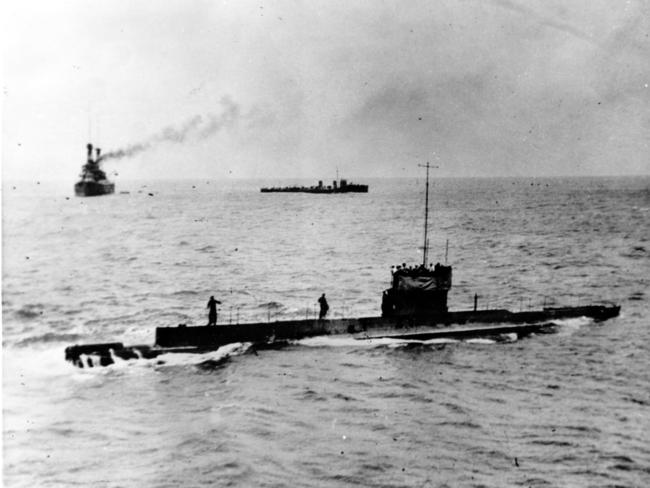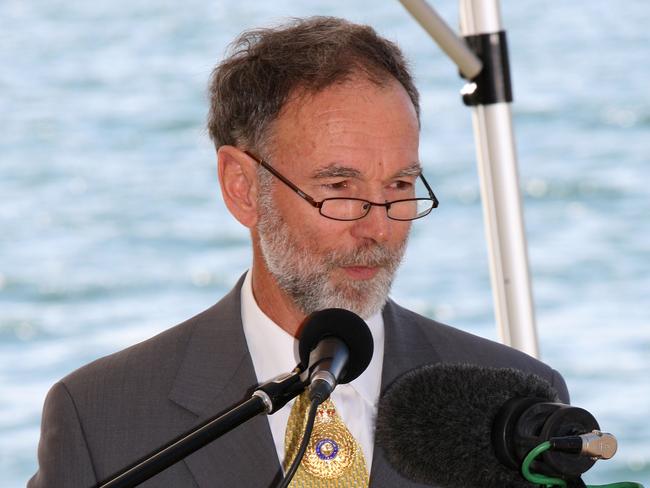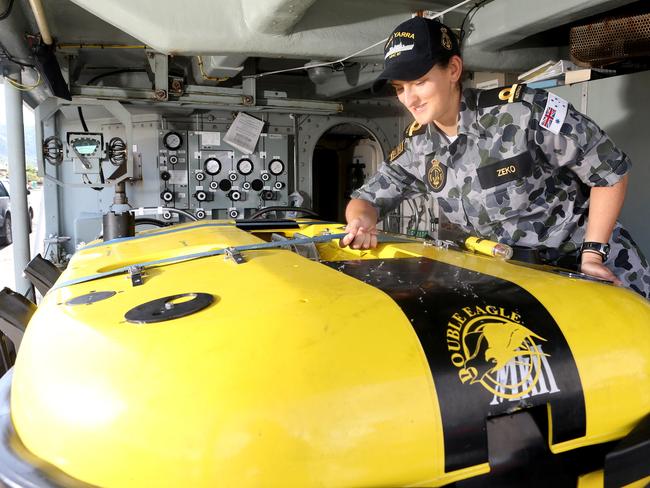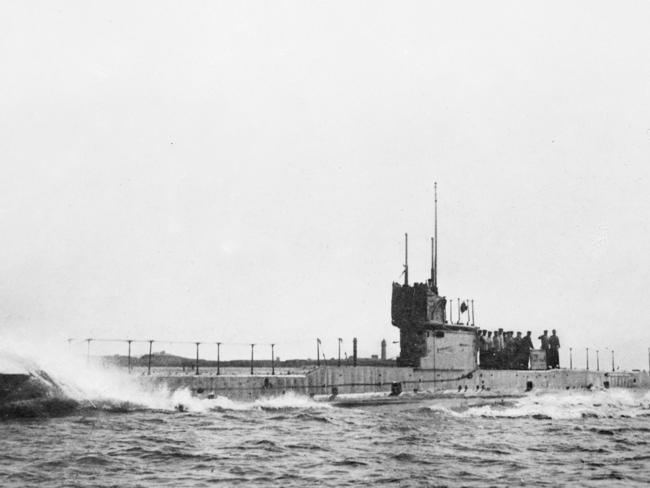Expedition to find Australia’s first submarine using technology that hunted MH370
TECHNOLOGY used to hunt for downed aircraft MH370 will now search for Australia’s first submarine and its 35 crew, lost 103 years ago.
National
Don't miss out on the headlines from National. Followed categories will be added to My News.
EXCLUSIVE
Australia will launch the deepest, most expansive maritime search since the hunt for MH370 to solve a 103-year-old mystery and assure today’s Australian Defence Force ranks their grateful nation will do whatever it takes to always try bring their men and women home.
Defence Minister Marise Payne has agreed to part-fund the largest ever expedition to find the Australian submarine HMAS AE1, which disappeared without a trace off the Papua New Guinea coast in September 1914, just weeks after the outbreak of the First World War.
Senator Payne was approached by private enterprise including a maritime archeology group led by Telstra chairman John Mullen and descendants of some of the 35 AE1 men on-board when she disappeared, to commit to $500,000 to find the sub and bring closure.
Matched with private donations, the search mission will be the largest ever conducted by the Commonwealth in joint venture and be launched between next month and February 2018.
“HMAS AE1 is one of the world’s great maritime mysteries and this expedition will be one of the most comprehensive searches for the submarine,” Senator Payne told News Corp Australia yesterday.
“We owe it to the men of AE1, their descendants and the entire navy community to continue to look for those who are forever on patrol.”

The Senator negotiated with the PNG government for access to their territorial waters.
The AE1, with its mixed Australian and British crew and one New Zealander, was dispatched to capture the German colonies including the then German New Guinea and lead the Allied capture of Rabaul on 13 September 1914.
But a day later on a hunt for German ships it became separated from its shadow HMAS Parramatta in a heavy afternoon tropical fog and was never seen again. Had it been sunk or just sank, debris from crushing at deep sea pressure would have left telltale signs but nothing was ever found leaving military historians and government with theories.

The best theory was it dived with a blocked or open hatch which meant it flooded and sank at sea pressure and was therefore intact on the sea floor.
The man to lead the expedition and RAN Rear Admiral (ret.) Peter Briggs said yesterday the latest search will involve the vessel from multinational Fugro deep sea geophysical exploration firm that was used in the Malaysian Airline flight MH370 search.
Despite failure to find the MH370, Adm. Briggs said finding a sub was a different proposition.
“There are different probabilities altogether,” he said. “Firstly we were probably looking in the wrong area for MH370, an aircraft like that that gets smashed to bits in the seas they were looking for litter on the bottom and we’re looking for very probably an intact submarine.
“When it sank the area was searched and the next day there was another thorough search and they found no debris, oil slick, bodies nothing so the conclusion from that is the submarine sank intact, the water is so deep it would have crushed if it simply lost control and sank to maximum depth.”

Adm. Briggs said previous searches, including one in 2014-15, had looked to a depth to 200m whereas now they would look to 1000m for the 55m-long sub over a 2111sq km area.
And he is confident the consortium of the Commonwealth, Australian National Maritime Museum, Fargo and not-for-profit Silentworld Foundation, led by Telstra’s Mr Mullen, will solve the mystery.

“We will certainly solve the puzzle of what happened to it, we will go back to the descendants and tell them that and the location, although the government will chose to keep those details confidential because we don’t want scavengers and wreck hunters having a go at it, and it will be closure of a 103-year-old mystery for all submariners, it’s the right thing to find our predecessors, our mates and we would hope if we ever end up on the bottom somewhere someone else will come look for us as well.”
Originally published as Expedition to find Australia’s first submarine using technology that hunted MH370


